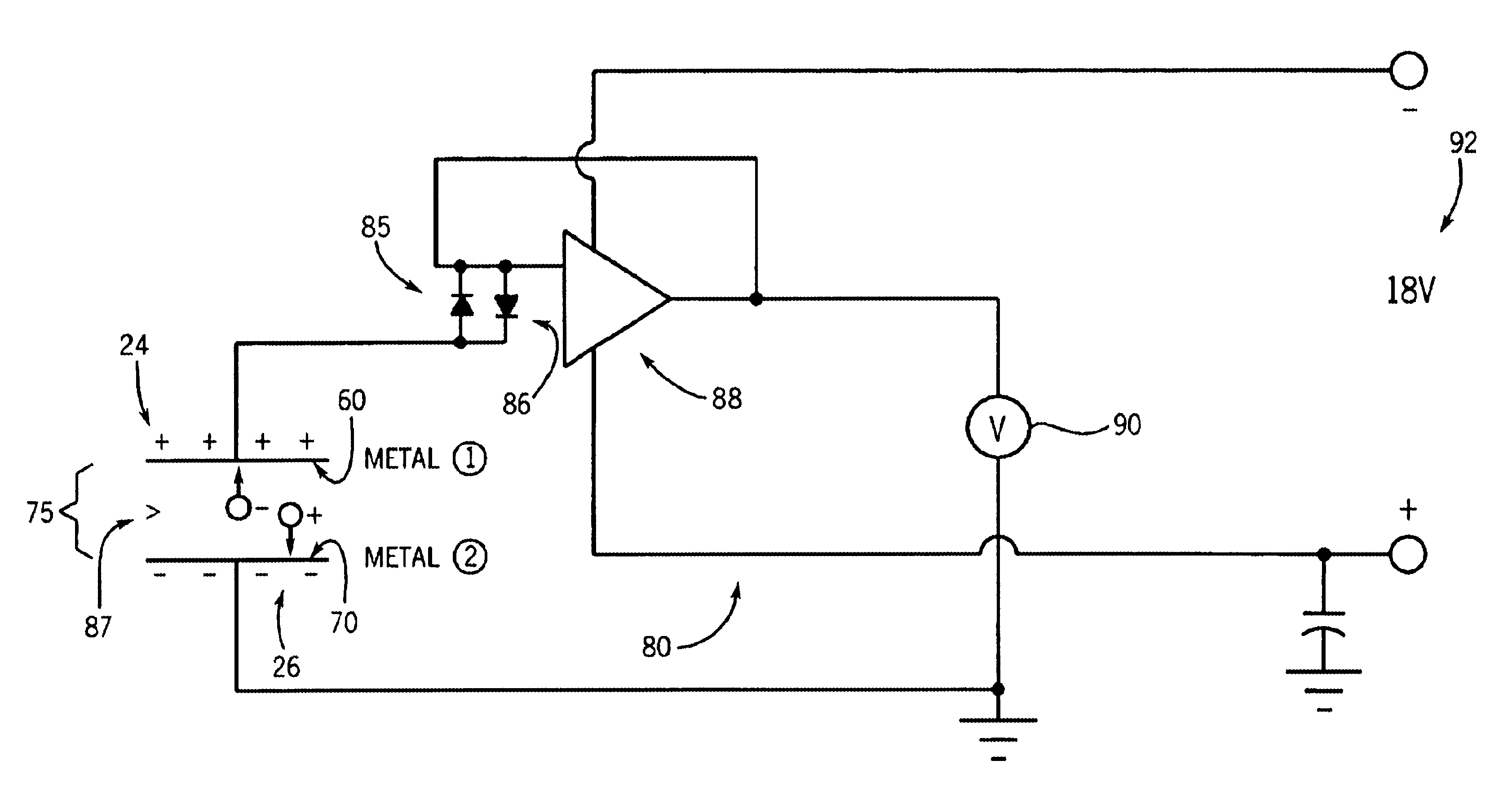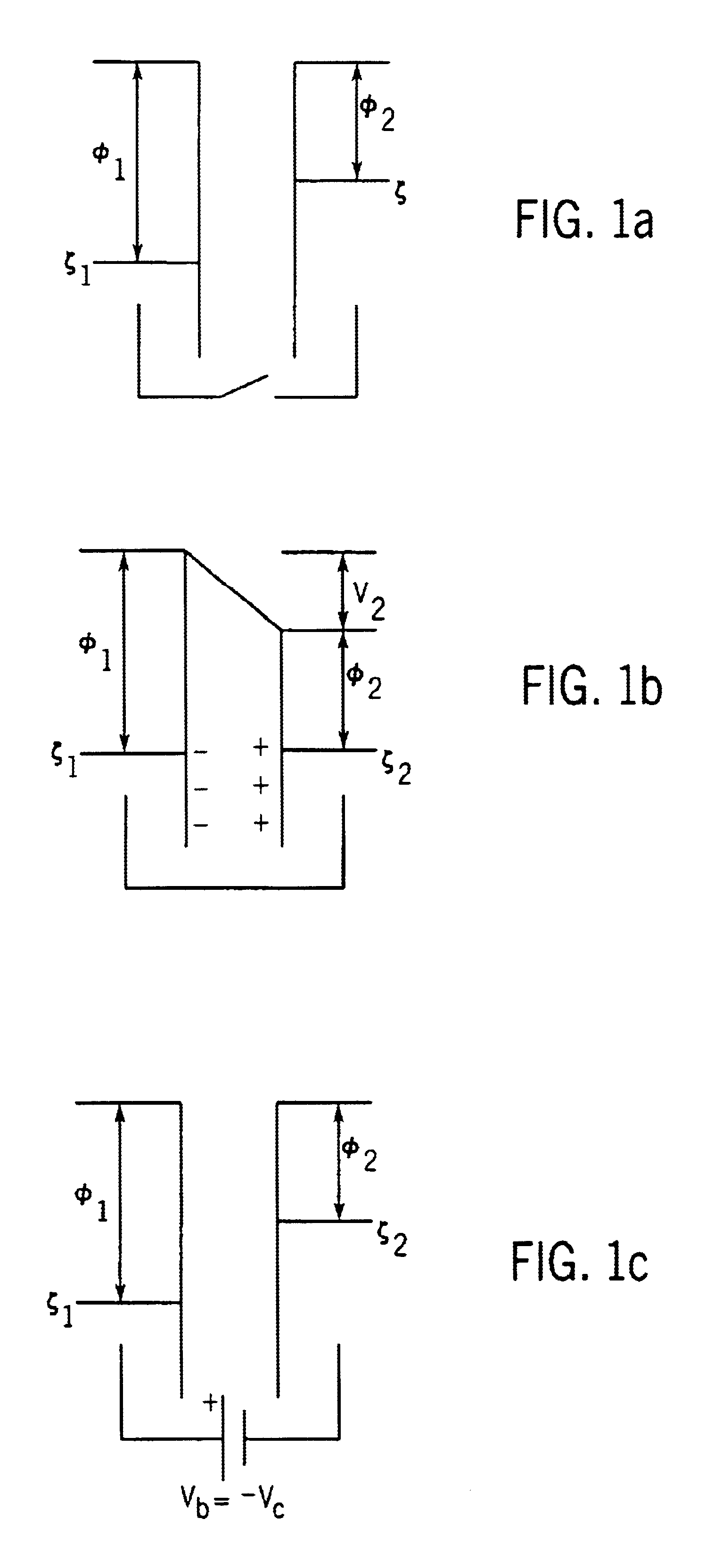Contact potential difference ionization detector
a technology of ionization detector and contact potential, which is applied in the direction of instruments, measurement devices, scientific instruments, etc., can solve the problems of limiting the speed of probe operation, capacitance probe, electric field,
- Summary
- Abstract
- Description
- Claims
- Application Information
AI Technical Summary
Problems solved by technology
Method used
Image
Examples
example ii
Use of the Ionization Probe as a Gas Flow Meter
The ionization probe can further function as a sensitive gas flow meter. With the probe situated above a metal with a known work function (aluminum, for example) the voltage produced by the circuit will be related to the ionized gas in the gap between the probe and this metal (schematic of apparatus shown in FIG. 5). If the gas in the gap undergoes movement, then the voltage of the ion probe will change. The voltage is then a measure of the movement of the gas molecules in the gap. The sensitivity of the output voltage to gas movement was measured by an experiment where a gas flow was purposely produced, and the output voltage was measured as a function of the flow rate. The ionization probe was inserted into a glass tube, one end of which was connected to a dry air gas cylinder. A calibrated flow meter was used to measure the flow of the gas. The measurements of the ion probe voltage (V) and the gas flow rate (ml / min) is shown in FIG. ...
example iii
Ion Probe used as an Accelerometer
The ion probe can also be used as an accelerometer. By arrangement of an experiment as shown in FIG. 7 the ion probe is positioned above a surface whose spacing, d, and amplitude of vibration can be measured and controlled. In these experiments the voltage output of the probe can be demonstrated to be related to d, the spacing. FIG. 8 shows the voltage (V) versus spacing (mm) for six spacings ranging from 0.5 to 0.75 mm. As can be seen in this figure there is a reciprocal relationship between the voltage output and the spacing.
PUM
| Property | Measurement | Unit |
|---|---|---|
| voltage | aaaaa | aaaaa |
| work function | aaaaa | aaaaa |
| electric field | aaaaa | aaaaa |
Abstract
Description
Claims
Application Information
 Login to View More
Login to View More - R&D
- Intellectual Property
- Life Sciences
- Materials
- Tech Scout
- Unparalleled Data Quality
- Higher Quality Content
- 60% Fewer Hallucinations
Browse by: Latest US Patents, China's latest patents, Technical Efficacy Thesaurus, Application Domain, Technology Topic, Popular Technical Reports.
© 2025 PatSnap. All rights reserved.Legal|Privacy policy|Modern Slavery Act Transparency Statement|Sitemap|About US| Contact US: help@patsnap.com



